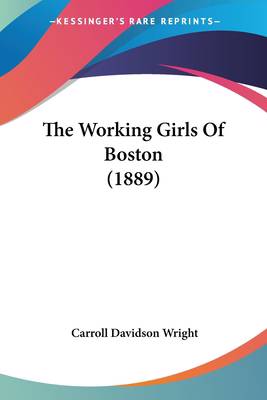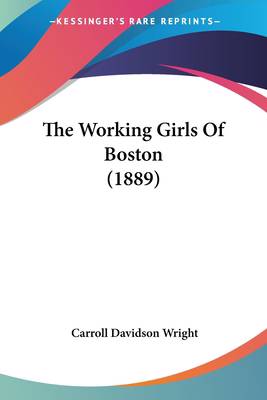
- Afhalen na 1 uur in een winkel met voorraad
- Gratis thuislevering in België vanaf € 30
- Ruim aanbod met 7 miljoen producten
- Afhalen na 1 uur in een winkel met voorraad
- Gratis thuislevering in België vanaf € 30
- Ruim aanbod met 7 miljoen producten
Zoeken
€ 32,45
+ 64 punten
Uitvoering
Omschrijving
The Working Girls of Boston is a historical non-fiction book written by Carroll Davidson Wright and published in 1889. The book provides a detailed account of the working conditions and lives of young women who were employed in various industries in Boston during the late 19th century. Wright, who was the first US Commissioner of Labor, conducted extensive research and interviews with working women in Boston, including factory workers, seamstresses, domestic servants, and clerks. The book is divided into chapters that focus on different industries and the challenges faced by women in each of them. Through personal stories and statistics, Wright highlights the low wages, long working hours, and poor living conditions that many of these women faced. She also discusses the lack of opportunities for education and advancement, as well as the social and cultural barriers that prevented women from achieving equality in the workplace. Overall, The Working Girls of Boston provides a valuable insight into the lives of working women in the late 19th century and sheds light on the struggles and injustices they faced. It is a significant historical document that has contributed to the ongoing fight for gender equality in the workplace.This scarce antiquarian book is a facsimile reprint of the old original and may contain some imperfections such as library marks and notations. Because we believe this work is culturally important, we have made it available as part of our commitment for protecting, preserving, and promoting the world's literature in affordable, high quality, modern editions, that are true to their original work.
Specificaties
Betrokkenen
- Auteur(s):
- Uitgeverij:
Inhoud
- Aantal bladzijden:
- 142
- Taal:
- Engels
Eigenschappen
- Productcode (EAN):
- 9781120937186
- Verschijningsdatum:
- 29/01/2010
- Uitvoering:
- Paperback
- Formaat:
- Trade paperback (VS)
- Afmetingen:
- 152 mm x 229 mm
- Gewicht:
- 199 g

Alleen bij Standaard Boekhandel
+ 64 punten op je klantenkaart van Standaard Boekhandel
Beoordelingen
We publiceren alleen reviews die voldoen aan de voorwaarden voor reviews. Bekijk onze voorwaarden voor reviews.











